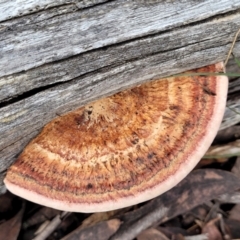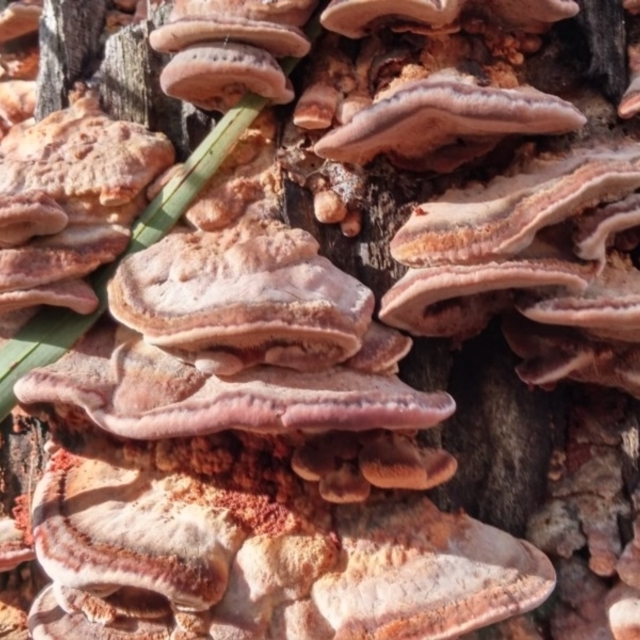Rhodofomitopsis lilacinogilva complex (Lilac Shelf Fungus)
The fruitbody is a polypore, generally bracket- or shelf-like in form, with a broad attachment to its woody substrate. The brackets may extend 10 or more centimetres out from the wood and may be several centimetres thick at the wood surface. The texture is much like cork or firm rubber and often a number of fruit bodies appear together in dense clusters. The pink or pinkish-lilac shades that are present in much of the fruit body make this a visually striking species. The upper surface may be brownish and bristly but the lower, pored surface, always keeps the pinkish shades.
Spore print: white.
Previously known as Fomitopsis lilacinogilva.
The visually similar Rhodofomitopsis feei (previously Fomitopsis feei) has also been reported from many places in Australia, generally in the tropical or sub-tropical areas but also from a few places in southern Australia, including south-east NSW/far eastern Gippsland. On the assumption that the NSW/Gippsland specimens have been correctly identified, it is possible that Rhodofomitopsis feei occurs also in the area covered by Canberra Nature Map, hence the use of ‘Rhodofomitopsis lilacinogilva complex’ to label sightings of these pinkish polypores.
Rhodofomitopsis lilacinogilva complex is listed in the following regions:
Canberra & Southern Tablelands | Southern Highlands | Albury, Wodonga | South Coast
Species information
- Rhodofomitopsis lilacinogilva complex Scientific name
- Lilac Shelf Fungus Common name
- Not Sensitive
- Local native
- Non-invasive or negligible
- Up to 810.3m Recorded at altitude
- Machine learning




































